Mike Vensel Talks About His Spring 2014 Collection
By Eveline Morel | December 17th, 2013 | Category: Articles, Interviews and Reviews, Fashion | Comments Off on Mike Vensel Talks About His Spring 2014 Collection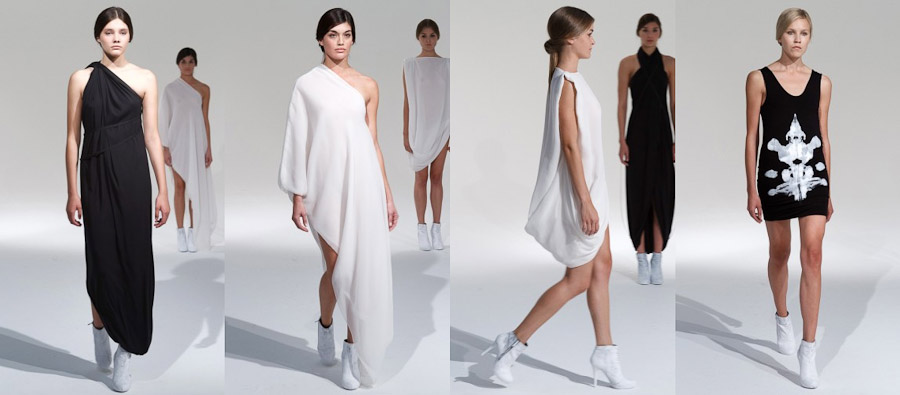 Mike Vensel seamlessly merged art and fashion into his Spring 2014 installation, as he presents a new way of looking at fashion, not only as unique art pieces, but also as new pieces of an ever-evolving, permanent collection, created with an eco-conscious mind-set. The 28 looks, focused around three colors – white, black, and navy – showcased his trademark architectural draping and pared-down simplicity that one has come to expect over the last seven years. The clothing also served as canvas for hand-painted abstract designs and patterns which complemented the fine art paintings that models carried briefly through the performance piece, as they re-arranged canvases in random patterns on the floor. A great example of how a fashion and art concept can be flawlessly executed from a multi-talented producer, designer, and artist, as well as founder of the Concept fashion shows.
Mike Vensel seamlessly merged art and fashion into his Spring 2014 installation, as he presents a new way of looking at fashion, not only as unique art pieces, but also as new pieces of an ever-evolving, permanent collection, created with an eco-conscious mind-set. The 28 looks, focused around three colors – white, black, and navy – showcased his trademark architectural draping and pared-down simplicity that one has come to expect over the last seven years. The clothing also served as canvas for hand-painted abstract designs and patterns which complemented the fine art paintings that models carried briefly through the performance piece, as they re-arranged canvases in random patterns on the floor. A great example of how a fashion and art concept can be flawlessly executed from a multi-talented producer, designer, and artist, as well as founder of the Concept fashion shows.
Mike Vensel talks with Agenda about fashion installations, the underlying concepts for his show, and how this collection opens a new chapter for his fashion brand.
Interview by Eveline Morel
Responses by Mike Vensel
What new chapter did this Spring 2014 collection open for you?
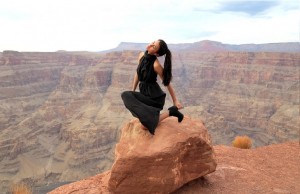 I’m now looking at a designing a collection in a very different way. Am thinking more of a permanent collection which has some editions that come season after season, but then there are staples that stay throughout the collection…Something I’ve done since the beginning, but haven’t really done officially. What I’ve beein doing is to take a silhouette, modify it season after season, but just call it a new collection every season, even if the silhouette is basically the same…So this is kind of publicly stating that: look, there is going to be a permanent collection, I’ll introduce new pieces every season, but the new pieces introduced will be a smaller set of a bigger set of the permanent collection…
I’m now looking at a designing a collection in a very different way. Am thinking more of a permanent collection which has some editions that come season after season, but then there are staples that stay throughout the collection…Something I’ve done since the beginning, but haven’t really done officially. What I’ve beein doing is to take a silhouette, modify it season after season, but just call it a new collection every season, even if the silhouette is basically the same…So this is kind of publicly stating that: look, there is going to be a permanent collection, I’ll introduce new pieces every season, but the new pieces introduced will be a smaller set of a bigger set of the permanent collection…
The other part of it, is that I’ve been working as a fine artist for about 16-17 years now, and I’ve never merged my fine art and my fashion together. This is the first time that I started looking at the collection and saying that in this era of mass production, I really want to start producing things that are one-of-a-kind, unique, and hand-made. So there’s an aspect of the collection which is going to be much more unique and hand-made pieces, hand-painted… Things that I make 100% myself, as opposed to something in a factory. Having a garment that has the hand of a craftsman is something that has an old-world tradition; it’s gotten lost in the modern fashion world where everything is mass-produced overseas by people that are being paid slave labor rates…
So this is where fine art, hand-painted pieces, and fashion as a consumer product, come together…As far as the painting, how well does it work with the garments? Does the garment wash well, is it wearable? Or is it something that you basically put on a mannequin?
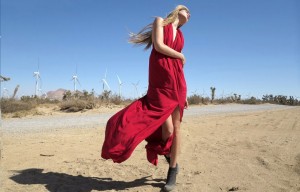 It’s all wearable. All the stuff that I use, screen-printing inks, it’s the same thing that they use for silk screening a T-shirt or garment like that…Some of the screen printing on chiffon is dry-clean only, of course, not to damage the chiffon by machine-washing it. They wear and have care instructions very similar to normal garments. One difference is that ink tends to be a little bit thicker and richer than in the screen-printing process where they try to do something very thin, as they try to conserve the amount of ink…It’s a more generous application of ink…
It’s all wearable. All the stuff that I use, screen-printing inks, it’s the same thing that they use for silk screening a T-shirt or garment like that…Some of the screen printing on chiffon is dry-clean only, of course, not to damage the chiffon by machine-washing it. They wear and have care instructions very similar to normal garments. One difference is that ink tends to be a little bit thicker and richer than in the screen-printing process where they try to do something very thin, as they try to conserve the amount of ink…It’s a more generous application of ink…
…and it’s more expensive, obviously…
…yeah, but it’s the way that it’s made – there isn’t really this thought to economy, whereas in mass production there’s this constant thought of economy: if we get rid of one extra button, if we get rid of that detail, can we make it cheaper? Same – if we switch the lining to polyester, instead of real silk, could we make it cheaper? My reaction: let’s make it more rich, more expensive, let’s make it 100% out of silk, all the lining, everything! …I mean, that’s just my belief, I believe in the integrity of the garment all the way through.
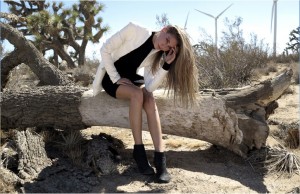 If you’re going to make something that’s hand-made or luxurious, it should be completely luxurious, no cutting corners.
If you’re going to make something that’s hand-made or luxurious, it should be completely luxurious, no cutting corners.
So you’re basically looking more at a luxury eco-garment?
Sort of…But my price points are still pretty wearable and affordable.
What are we talking about, what kinds of prices?
The least expensive thing in my line is around $100. Then it goes up to the most expensive dress, that’s hand-made, hand-painted, that goes up to around $700.
That’s not bad, at all.
It’s still affordable. It’s not this couture, twenty-thousand-dollar price range that’s out-of-range for people. I want to make things that are hand-made and one-of-a-kind and luxurious, but I want to make them affordable. Because I don’t want them to be exclusive to the ultra-rich…
I recently talked with someone who made an interesting statement that got me thinking: “it’s only the rich that can afford to be eco-friendly, the poor people that are struggling, are more worried about survival than the environment.” Of course, the conversation led to China, India, and some of the countries that have huge poor populations…So is sustainability a concern only for the fortunate?
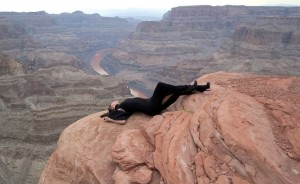 The most wasteful citizens in our world are the ultra-wealthy: they have these huge houses that consume a lot of electricity, a lot of water, multiple cars, boats…Their lifestyle has a heavier impact on the environment.
The most wasteful citizens in our world are the ultra-wealthy: they have these huge houses that consume a lot of electricity, a lot of water, multiple cars, boats…Their lifestyle has a heavier impact on the environment.
People that are extremely poor in those countries [China and India] live very simple lives, often consume vegetarian food and are not mass-murdering animals for their own personal gain… If you look at the traditions of fashion, the poorest people in the world hand-made their clothing. I think it was only until wealthier people could hire a tailor and buy something that was pre-made, that we started moving into a different time where things became mass-produced. Now it’s more affordable to just buy clothes, wear them a season, and just throw them away. For almost anyone, whether you’re shopping at Forever 21 or you’re shopping at Chanel, that’s the new paradigm we live in.
My mother grew up on a farm in Pennsylvania, learned how to sew when she was little, she made her own clothes. It was part of their tradition. But if you go back to the roots of our humanity, how we create clothes and why we wear clothes, a lot of the poor people were making their own clothes and had a hand in their own image, in a way.
Yes, of course, but not everyone knows how to sew…And the people buying your clothes, would still be buying something that’s made by someone else, instead of making it themselves…
I would encourage whoever likes my dresses, if they know how to make a dress, make your own. If you can’t afford it and you like it, just knock it off.
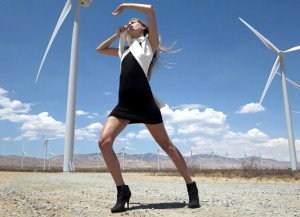 So you’re advocating going back to basics? Of course, we can’t really go all the way back…
So you’re advocating going back to basics? Of course, we can’t really go all the way back…
Of course, now, most people don’t have the skills to make their own clothes, or the time. But at least having a conscious look at how things are made, and how we consume, is important.
I think there’s a bit of a problem in fashion, the big brands build their products to be obsolete, so you’re going to love it for one season. After the next season, it’s going to look old, you won’t want it anymore, so you’ll get rid of it or throw it away.
And that, in a way, creates irresponsibility and schizophrenia for the consumer…I feel you should buy something, love it for 10 years, and continue to wear it and hand it down to future generations if it holds its integrity. So I try to design things that are much more classic – back again to the idea of the permanent collection. Don’t throw away your wardrobe every season, don’t buy a whole new wardrobe, buy the pieces that you like, and wear them with the previous collection –that’s my belief.
I think the most eco-friendly fashion is not buying fashion at all. If you make a dress that’s eco-friendly; and if you wear it for one season and then throw it away, it’s not really eco-friendly, it’s still going into a landfill somewhere. I think ‘eco-friendly’ is a trend, a marketing buzz-word, if it’s not really designed in a way that it can sustain itself in your closet. It’s simply more of a timeless model – if you have something that you can keep for 20 years (even if it’s made out of fur, and you keep it in your family for generations), that’s more sustainable than buying a hundred organic pieces that end up somewhere in a landfill and pollute the world.
I think it’s more about the taking time to think about why we consume, how we consume, and what happens after we’re done consuming.
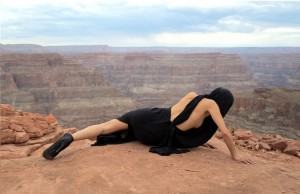 This almost goes back, a little, to what couture was – well-designed pieces, that are really ‘Pieces’, they don’t go out of style. Doesn’t really matter what year, every time you wear them, they still look like a ‘piece’, they still have that ‘wow’, well-designed, couture feel..
This almost goes back, a little, to what couture was – well-designed pieces, that are really ‘Pieces’, they don’t go out of style. Doesn’t really matter what year, every time you wear them, they still look like a ‘piece’, they still have that ‘wow’, well-designed, couture feel..
Yes, it goes back to fine art. If you have a great piece of art, you’re not going to want to throw it away after 6 months of having it in your house. You’re going to want to keep it in the collection, and enjoy it. I think fashion can have that ability too, it can be this collectible thing that you keep with you as long as possible. You wear it till you wear it out, and then maybe replace it. Or maybe only wear it on special occasions. There’s this weird mentality in the current fashion system “Love it now, hate it in 6 months.” It’s important to the profit structure that you’re going to go out and consume. But that’s not necessarily good for you, that’s not necessarily good for the environment…
So what about the fashion industry? It’s one of the biggest industries in LA. If this would be the new system, would this be the death of the LA fashion industry?
Like any industry, I think there can be an evolution. And just because something is current now, it doesn’t mean it’s the best way, or the way it should be, or the way it will always be. So I think if there’s a scaling down on mass production, a re-thinking and re-tooling about how people buy and what they wear, I don’t think this is necessarily a problem. But for someone that owns a huge factory and employs a lot of people, he might say ‘what about my profit and my employees?’ I’m just a designer trying to do what I feel is right, and to do it in a way that I feel is responsible and ethical. I don’t see it as a solution for the entire system, but I’m prepared to embrace whatever inevitability comes in the fashion system and adapt to it. That’s a good thing about being a smaller designer, I have that flexibility and adaptability to whatever situation. I kind of started my brand in a bad economy. So I had to rethink what I can do to keep my brand alive, the answer to it is just to rethink everything and find a solution for your needs and how to continue to produce a product.
Speaking of rethinking everything, are we possibly talking about a new selling model – because a collection like yours, one-of-a-kind pieces, something that’s crafted, is not necessarily going to sell in the same way. So how do you sell your collection?
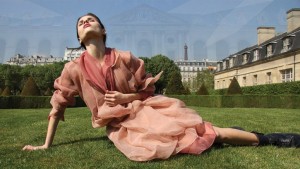 I actually sell a lot online, which is kind of interesting, a good 21st century development. As designers, we have an opportunity to control much more of the flow of the product to the consumer: create an item, put it for sale online, sell it, manufacture it, and ship it. I kind of did it as an experiment, it worked well, so I continued to do it.
I actually sell a lot online, which is kind of interesting, a good 21st century development. As designers, we have an opportunity to control much more of the flow of the product to the consumer: create an item, put it for sale online, sell it, manufacture it, and ship it. I kind of did it as an experiment, it worked well, so I continued to do it.
I don’t have the same structure, I don’t have a middle-man, I can sell directly to the consumer, can sell goods cheaper, or sell them things that are one-of-a-kind. If you were going to do that in a retail model, it gets much more complicated. If each retailer will have to emulate that model within itself, and still find margin between me, them, and the consumer.
For a retailer and boutique owner, one-of-a-kind is pretty hard to work with. Works for jewelry, but otherwise, since you’re dealing with sizes, it’s really hard to sustain it and stay alive. A lot of designers will make things, put them on consignment, and it’s always an issue – invariably a person will come in, see it, and ask for a bigger or smaller size, that we don’t have, and there goes the sale!…
When I started designing my collection, I started using fabrics that are flexible. I don’t necessarily have a size range that’s zero-two-four, it’s more like a size that ranges from zero to four, another ranging from four to eight, and so on. So a person could buy a piece and live with it. If they happen to gain five pounds, or lose five pounds, if their lifestyle changes, the garment adjusts to them. I continue to do that in the current collection, there are very few pieces that aren’t at all flexible…Even the pants are four-way stretch twill, so they may have some give…
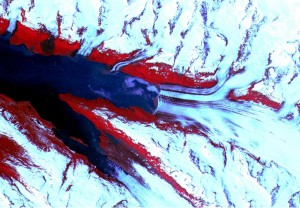
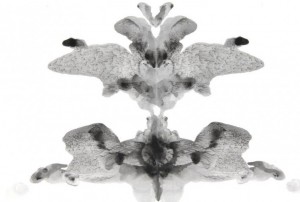 So you started painting first. Did you study painting in school?
So you started painting first. Did you study painting in school?
I went to school for architecture, and a professor told me I might be a little too creative for architecture, and that I should consider taking a sculpture class or something. So I took a painting class. My instructor…great painter, was showing in major museums (this was in Miami), and I was just really inspired by it. I started painting and creating work, and delving into the contemporary art world scene, and just fell in love with it. I came to understand that there is a reality to the starving artist, and needed to find some sort of compromise between art and commerce. I went to only two years of school for architecture, and started thinking of what other avenues might be better. So I looked at interior design, graphic design, fashion design, architecture, all the different design fields, and settled on graphic design, where I got my Bachelor’s Degree in. And then, with a background in graphic design, I decided to go into fashion design. I took some classes at Santa Monica College, some classes at Otis, and some classes at St. Martin’s in London, and then from there, just started creating the line. Got a sewing machine, got some fabric, and learned how to sew. Made hundreds of dresses and perfected the craft through doing it.
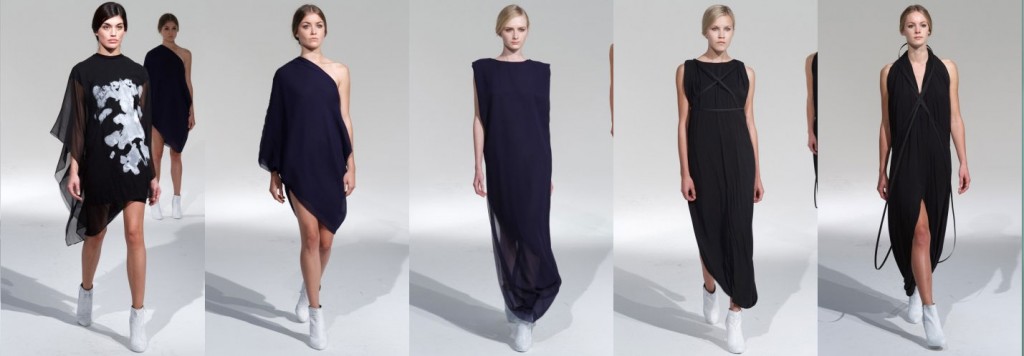 You’ve shown both as an installation and as a runway, which one do you prefer more? Is there some kind of formula?
You’ve shown both as an installation and as a runway, which one do you prefer more? Is there some kind of formula?
There’s pros and cons for each one. In a show, you can show all the looks after one another, there’s a certain energy. But there’s certain limitations in a runway show, where you can’t carry off certain ideas. Like in this show, I had the models carry some of my paintings. And if they were going to carry my paintings while they’re walking on the runway, they would block the clothing, the photographers couldn’t really shoot it. But by doing it in a half-hour installation, you could see the painting, you could see the painting with the model, and you could see the clothing on the model, front, back, side. I really don’t have a preference, one or the other, I really like doing both…
Being the producer of Concept, I’m generally the last person to go on the schedule…This season, initially I had a runway show at 7, then got bumped up to a runway show at 1, then Nuvula came a week before and wanted to do the 1 pm runway slot, so I went to take a slot at 5 doing an installation, then that got filled… So I created a new time slot at noon for my installation. Figured it’s kind of a risk to do such an early time slot Saturday, people want to sleep in, but that there’s enough people in Los Angeles that follow my brand and like it, that they’ll come in and attend…it worked out really well.
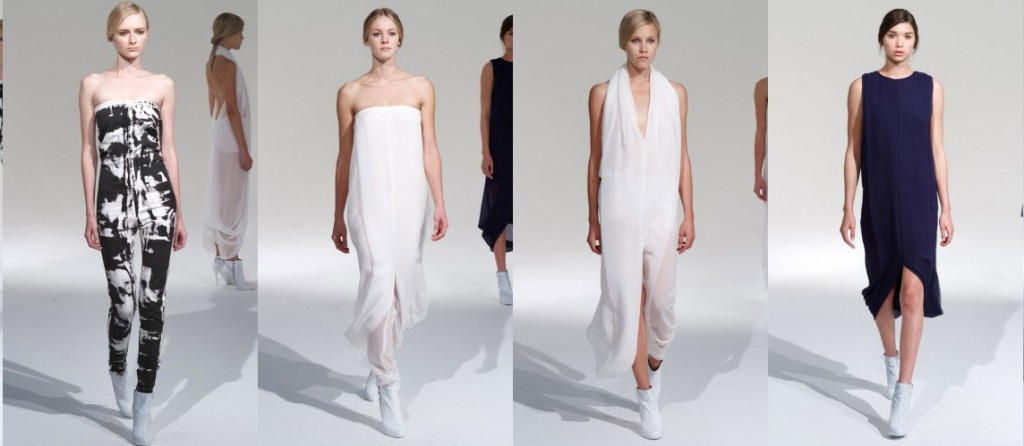 The installations have an art quality to them…there was always a focus on the creativity…
The installations have an art quality to them…there was always a focus on the creativity…
In an installation, you can more easily show the direct inspiration for the fashion, something that may be missing on the runway…it makes it great for the viewer that they can explore the inspiration or the idea of the brand beyond the fabric on a model.
Chiffon from recycled plastic bottles – how expensive is that? Is this something that’s readily available?
It is, but it’s not as easy as just going down the street and sourcing it the same way you source poly chiffon…It’s more expensive than a regular poly chiffon, but it looks and feels like poly chiffon, so to the person that’s wearing it, they can’t really tell the difference. But to the person knowing where it’s sourced from, there’s a difference. Some consumers will pay for it, some won’t. Just like you go to the grocery store, some will pay extra for organic, some won’t. If there is a big enough demand in the industry for it, the price will come down.
Right now, eco-friendly fashion is still kind of a niche, it’s not the overwhelming trend in the industry. If there were enough people wanting it, it would become less expensive.
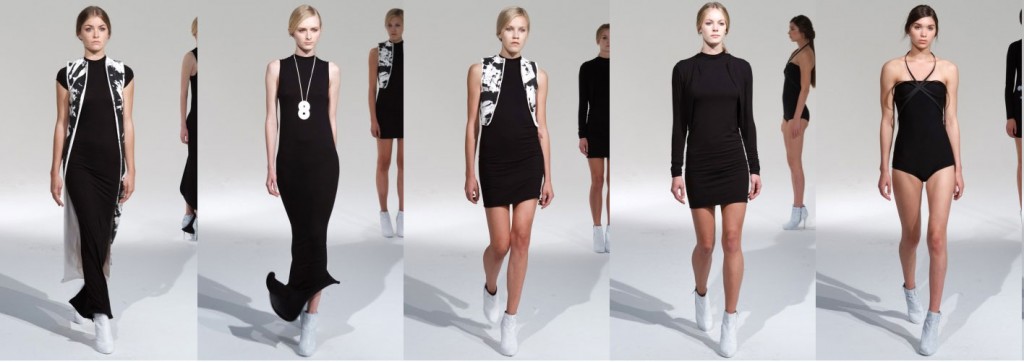 In 2005-2006, if you wanted eco-friendly fashion, either you paid a lot of money, or you ended up having these lines that the design quality wasn’t really there, felt a little homespun and crafty…Now we’re starting to see serious lines that feel like high design, a higher fashion quotient…This eco-friendly aspect, is this something that defines the Mike Vensel brand? How would you define the collection?
In 2005-2006, if you wanted eco-friendly fashion, either you paid a lot of money, or you ended up having these lines that the design quality wasn’t really there, felt a little homespun and crafty…Now we’re starting to see serious lines that feel like high design, a higher fashion quotient…This eco-friendly aspect, is this something that defines the Mike Vensel brand? How would you define the collection?
I’m an American fashion designer, I happen to use some materials that are eco-friendly…
…but I don’t brand myself as an eco-designer. I consider myself as a responsible person, I want to do what’s good for the environment…I do those things by my own choice. But I don’t use it as a leverage or selling point as the major push for my line. I still use regular silk chiffon, I have used leather in previous collection, I have even used fur.
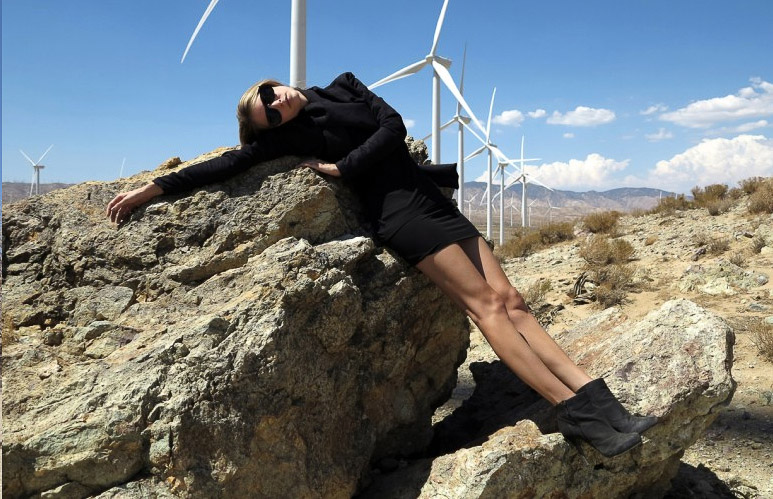 Those things, according to some people wouldn’t be eco-friendly. My response is – if you’re using things in a responsible way, whatever you do is eco-friendly…If you’re an Alaskan hunter and use baby seal to keep yourself and your family warm, that’s eco-friendly. But if you slaughter all these baby seals to make the new ‘it’ bag, that’s not eco-friendly. On the surface, people want to look at something and they see a label, and they say ‘this is good, this is bad’…I think it’s much of a deeper problem than that.
Those things, according to some people wouldn’t be eco-friendly. My response is – if you’re using things in a responsible way, whatever you do is eco-friendly…If you’re an Alaskan hunter and use baby seal to keep yourself and your family warm, that’s eco-friendly. But if you slaughter all these baby seals to make the new ‘it’ bag, that’s not eco-friendly. On the surface, people want to look at something and they see a label, and they say ‘this is good, this is bad’…I think it’s much of a deeper problem than that.
There isn’t really good or bad fashion, and all fashion isn’t not eco-friendly, and there isn’t any piece of fashion which is completely eco-friendly. Because on some level, it has to be produced, there has to be dye, there has to be manufacturing, it needs to be transported, it’s going to have an impact on the environment. Now I can say it’s MORE eco-friendly, which I can say about my line, that it’s more eco-friendly that most lines, but I don’t claim it to be completely that…There are levels of eco-friendliness, I guess…
So it’s basically more of how big is your footprint, really, on the environment?
Yeah, my belief is that if you can reduce the footprint and you can reduce the impact we have on the environment, you can do things that are more thoughtful, more environmentally friendly, that’s always a good thing…I don’t think anybody wants to harm more animals intentionally, I don’t think anybody wants to pollute the oceans intentionally. These are side effects that come from irresponsible production. The consumer is just not aware of it, they just think “I like this pretty dress, I put it on, and I feel good”… I don’t claim to have the answers, I don’t profess to say this is the way you should live your life, I’m just merely asking the questions…These materials are available, let’s see what we can do with it. Some people would say, I don’t want a dress out of plastic bottles, this is some kind of science project. But if you can do it the right way, then what would be the difference between recycled plastic bottles and a chiffon?








